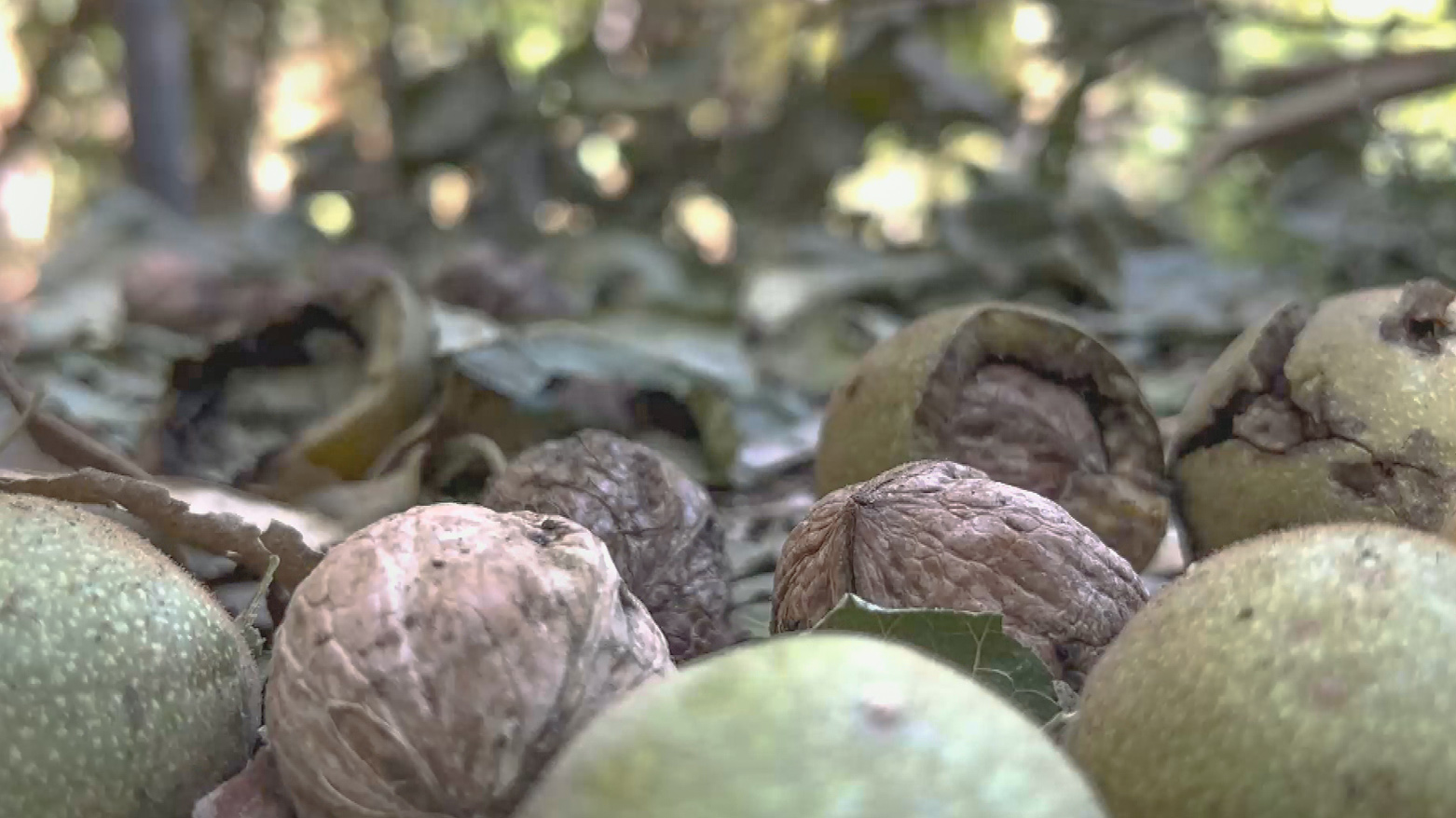Hawraman Walnut Harvest Brings Markets to Life in Halabja
The Hawraman area is home to an estimated 95,000 walnut trees, renowned for producing some of the finest varieties of walnut in Kurdistan.

ERBIL (Kurdistan24) – The walnut harvest season is underway in the picturesque Hawraman region of Halabja province, where farmers are busy collecting and preparing one of Kurdistan’s most prized agricultural products for the market.
Every autumn, the walnut groves of Hawraman come alive as locals gather walnuts, clean them, and dry them for sale. This year, demand is once again high, especially in the Byara district, where the local market has become a bustling hub for both sellers and buyers.
The Hawraman area is home to an estimated 95,000 walnut trees, renowned for producing some of the finest varieties of walnut in Kurdistan. Walnut trees are celebrated not only for their economic value but also for their resilience and longevity—some reaching 200 to 300 years of age and towering over 40 meters. Farmers note that each healthy, mature tree can yield thousands of nuts annually, sustaining their livelihoods for generations.
Hawraman walnuts hold a special place in Kurdish culture and cuisine, valued for their quality and distinctive taste. Their reputation extends beyond the region, drawing buyers from central and southern Iraq who flock to Byara during the harvest season.
Mohammed Dara, a shopkeeper in Byara, told Kurdistan24 that walnuts are brought in from all villages in Hawraman before being sold in local markets. Prices currently range between 6,000 and 7,000 Iraqi dinars per kilogram. “The demand is very strong this year, and the quality remains excellent,” he said.
Aboud Mohammed, a visitor from southern Iraq, said he travels to Byara every year to purchase walnuts. “We come to Hawraman and Byara, famous for their exceptional walnuts. People visit every year to buy walnuts and take them home. The quality is excellent—it’s rare and tastes great,” he said.
In the Hawrami, or Gorani, dialect, walnuts are called gweez, and the kernel is known as mjgay, meaning “brain”—a name inspired by the walnut’s resemblance to the human brain. Nutrition experts confirm that walnuts are particularly beneficial for brain health, a fact long recognized in local tradition.
As markets in Byara and other towns fill with ripe walnuts, the season not only sustains farmers’ incomes but also reinforces Hawraman’s reputation as one of Kurdistan’s richest agricultural and cultural landscapes.
Agriculture in the Kurdistan Region is a historically significant and expanding sector, supported by fertile land and a favorable climate that allows for a variety of crops and livestock. The Kurdistan Regional Government (KRG) prioritizes agriculture to diversify the economy and enhance food security. To achieve this, the KRG is investing in infrastructure such as greenhouses and silos, which aim to boost domestic production and decrease dependence on oil revenues. Additionally, modern techniques are being adopted to enhance crop yields and quality, facilitating the export of products like wheat, pomegranates, and honey to international markets in the Gulf and Europe.
Read More: Kurdistan Farmers Export Over 3,000 Tons of Local Produce Daily, Agriculture Directorate Confirms
The region's agricultural success also highlights its cultural heritage, with traditional farming practices blending seamlessly with modern innovations. This integration not only preserves the unique identity of Kurdish agriculture but also positions the Kurdistan Region as a key player in sustainable and export-oriented farming, ensuring long-term economic growth and resilience.
